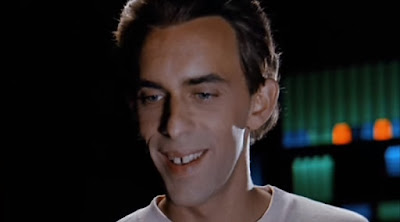A Town Called Panic (2009): Writer/directors Stéphane Aubier and Vincent Patarfollows chronicle the quixotic misadventures of three friends: Cowboy, Indian and Horse, in a crudely animated but endearing Belgian film that’s like watching Gumby on crystal meth. The three friends interact and react to a menagerie of other townsfolk, including a high-strung farmer who’s in danger of suffering a stroke at any moment. A Town Called Panic is essentially plotless, jumping abruptly from one episodic situation to another, with dilemmas compounding like layers on an impossibly tall cake. It has been suggested to me that this movie emulates how children play, and I have to agree. Seemingly random elements are added to the story, including a giant robotic penguin that throws snowballs or an undersea city populated by kleptomaniac fish people. Taken in the right frame of mind, it’s a lot of fun. In fact, this one might play even better for kids, who are more apt to accept chaos as the norm. It’s the perfect solution when you get sick of all of the usual suspects from Disney, Dreamworks and the other major studios.
Rating: *** ½. Available on DVD and Netflix Streaming.
The Good, the Bad, the Weird (2008): A Korean Western? Why not? Ji-woon Kim’s ode to Sergio Leone is a post-postmodern Western, played fast, loud and over the top, and set in 1940’s Manchuria. We’re introduced to the three main characters in the opening scene, on a train: A bounty hunter on the trail of his quarry, a ruthless killer (clad entirely in black, of course), and an eccentric outlaw with a price on his head. Although there’s no question about Park Chang-yi (The Bad), the lines blur when looking at the other two. Kang-ho Song’s Yoon Tae-goo (The Weird) compared to Eli Wallach’s Tuco, comes across as more sympathetic and a trifle less sadistic, as an unholy hybrid of that character and Clint Eastwood’s Man with No Name. The “Good” in this version, Park Do-won (Woo-sung Jung) is played straight, and seems to be a riff on the stereotypical Western hero who’s a crack shot and always gets his man. Everyone is in pursuit of an elusive map, marking a hidden treasure. While there’s nothing particularly original about the story or situations, it’s all in the telling that keeps things fresh, with crazy characters, Wild West-style shootouts mixed with martial arts, and inventive cinematography. All of this takes place in the backdrop of a conquered China. It’s probably helpful to know about the history of the 1st half of the 20th century in China, Korea and Japan, but that doesn’t really matter. The true language spoken here is Western. Even if it doesn’t have anything new to say, it’s a wild ride to the finish.
Rating: *** ½. Available on DVD, Blu-Ray and Netflix Streaming.
Countess Dracula (1971): The title of this middling film is a misnomer, since the main character doesn’t really have anything to do with Dracula, and could never be categorized as a vampire, despite her penchant for blood. This is actually Hammer’s anemic (pun intended) take on the Lady Bathory legend with the late Ingrid Pitt starring as Countess Nodosheen (in bad old age makeup), who bathes in the blood of young virgin women to retain her youthful visage. As it turns out, this description is a lot more interesting than the movie itself, which pulls most of its punches instead of trying to terrify. Most of the story involves a plot by the Countess to pass herself off as her daughter Ilona so that she can marry Lt. Toth, a much younger man. The more lurid aspects of the story are downplayed in favor of a dull costume drama with a few scant splashes of blood thrown in. It’s really unfortunate that this was such a snoozefest, since the source material is ripe for a worthwhile retelling. Maybe some day, another enterprising filmmaker will realize its full potential, creating a new film that more successfully skirts the line between exploitive and informative (infosploitive?).
Rating: **. Available on DVD, Netflix Streaming
The Maze (1953): This early 50s curiosity from director William Cameron Menzies (Invaders from Mars) stems from an era when there was a push to release practically everything in 3D, whether it was warranted or not (Hmmm…Sound familiar?). Richard Carlson (Creature From The Black Lagoon, It Came From Beneath The Sea) stars as Gerald MacTeam, engaged to be married in two weeks when he’s suddenly called away to his deceased uncle’s remote Scottish castle. Weeks go by, and his fiancé Kitty (Veronica Hurst) hears nothing from him, except for a cryptic letter stating that the engagement is off. She decides to investigate, discovering that her happy-go-lucky beau has turned into an asshole. Instead of leaving, as he implores her to do, she’s determined to get to the bottom of the mystery of his sudden personality shift, and find out what dark family secret he’s hiding. The film does a fairly good job of slowly building tension and mystery, and the sets are interesting to look at. It’s just a shame that a lot of the suspense is derailed by a goofy climax and a pat ending that attempts to wrap everything up in a nice little package. Still, it’s worth a look, if only for the first nine-tenths.
Rating: ***. Available through Netflix Streaming only.






























